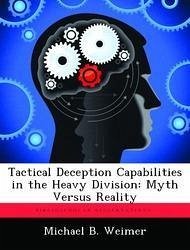Nicht lieferbar

Supporting Forward in the Heavy Division: Do Sustainment Efforts Represent an Asset or a Liability to the Generation and Maintenance of Division Comba
Versandkostenfrei!
Nicht lieferbar
This monograph evaluates the relationship between combat service support operations and heavy division combat power. It focuses on heavy division operations on a mid- to high-intensity battlefield against a Warsaw Pact threat. First, it addresses the doctrinal implications for CSS operations on this battlefield. It investigates why there is emphasis on forward oriented sustainment efforts. Included here is a review of current logistics doctrine. This explains how the division expects to achieve forward oriented, responsive support through the six key sustainment functions of fuel, arm, man, fi...
This monograph evaluates the relationship between combat service support operations and heavy division combat power. It focuses on heavy division operations on a mid- to high-intensity battlefield against a Warsaw Pact threat. First, it addresses the doctrinal implications for CSS operations on this battlefield. It investigates why there is emphasis on forward oriented sustainment efforts. Included here is a review of current logistics doctrine. This explains how the division expects to achieve forward oriented, responsive support through the six key sustainment functions of fuel, arm, man, fix, and transport the force, as well as protect the sustainment system. Next, is a brief overview of the Soviet approach to tactical sustainment. This includes the relationship between Soviet sustainment philosophy and their concept of warfighting. Where instructive, comparisons are drawn between Soviet and U.S. sustainment practices. Finally, the monograph reevaluates U.S. sustainment doctrine in the context of the Wass de Czege Combat Power Model. This model maintains that combat power is the net result of a dynamic tension between two forces acting against each other on the battlefield. The commander decides the outcome of battle by how he combines the firepower, maneuver, protection, and leadership potential of the division in action against the enemy. Sustainment operations bring both capabilities and limitations as they influence these functions of the combat power dynamic. Finally, the monograph concludes that the commander, through his preparations and decisions, determines whether sustainment efforts enhance or degrade division combat power.









